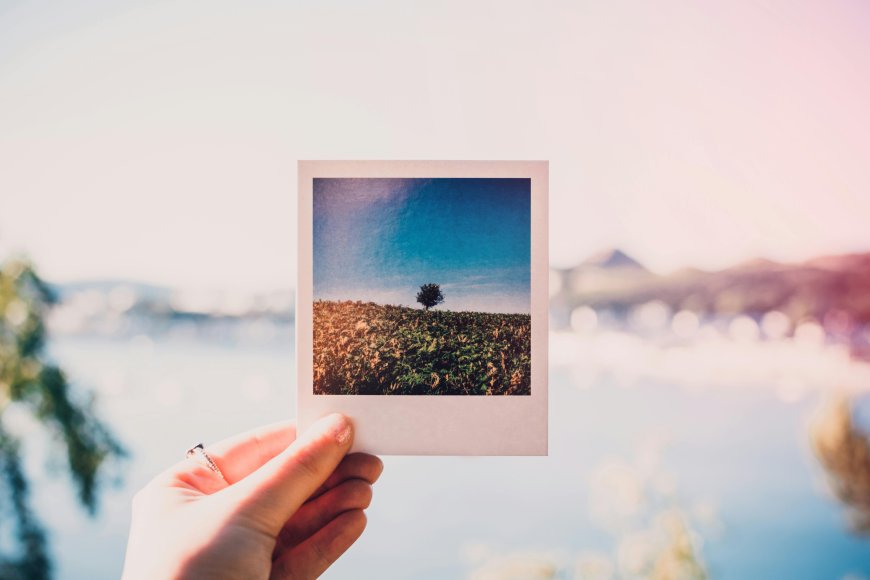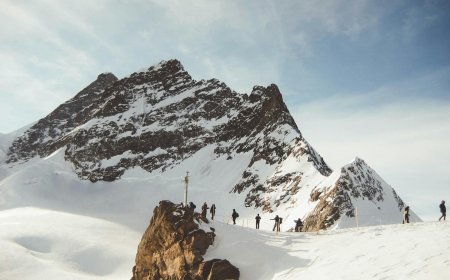Tips for Photography in the Wilderness
Tips for wilderness photography aim to achieve the beauty of natural photography by directing attention to small details and creatively using lighting. It is advisable to search for unique angles and innovative photography techniques to highlight the beauty of nature in its finest form. Additionally, planning photography trips in advance and preparing for changing weather conditions are encouraged to capture distinctive and meaningful images.

Tips for wilderness photography aim to achieve the beauty of natural photography by directing attention to small details and creatively using lighting. It is advisable to search for unique angles and innovative photography techniques to highlight the beauty of nature in its finest form. Additionally, planning photography trips in advance and preparing for changing weather conditions are encouraged to capture distinctive and meaningful images.
Tips for Photography in the Wilderness
Natural photography techniques are a set of methods and procedures that photographers can use to capture images that express the beauty and splendor of nature in an authentic and realistic way. These techniques include a variety of steps and preparations that photographers must follow to achieve stunning results. Here are some details about these techniques:
1. Use of natural lighting: Lighting is a fundamental element in natural photography, and photographers should control it well. It is preferable to shoot during the golden hours of the day (sunrise and sunset) when the light is soft and warm, helping to highlight details and enhance the beauty of the natural scene.
2. Choosing unique angles: Selecting distinctive shooting angles helps to present a new and exciting view. Photographers should explore different angles and locations to find the perfect angle that uniquely highlights the beauty of nature.
3. Focus on details: Focusing on small details is an essential part of natural photography techniques, as these aesthetic details add a unique touch to the image and speak the language of nature.
4. Use of proper exposure techniques: Photographers must understand exposure techniques and control them correctly to adjust the brightness and contrast in the image, helping to highlight the beauty of the natural scene and its details clearly.
5. Attention to the background: Photographers should take the background into account when capturing natural photos, as the background can play an important role in highlighting the main subject and making it stand out in the image.
6. Pre-planning and patience: Pre-planning photography trips and being patient are essential parts of natural photography techniques, as it may require many shots and attempts to capture the perfect image that fully expresses the beauty of nature.
These techniques come together to help photographers create natural photos that speak the language of beauty and splendor, reflecting the beauty of nature in all its details and colors.
The secret to achieving stunning natural photos in any conditions
To achieve stunning natural photos in any conditions, you need to have advanced photography skills and a deep understanding of the factors that affect image quality in different conditions.
1. Make the most of available light: In varying natural conditions, lighting can change significantly. Take advantage of natural light by shooting during times that provide soft light, such as sunrise and sunset. Use shadows and direct light carefully to avoid overexposed or overly dark photos.
2. Choose ideal angles: Selecting ideal angles for capturing photos can make a difference in the end result. Try experimenting with a variety of angles and locations to find the one that uniquely highlights the beauty of nature.
3. Focus on small details: Part of the beauty of nature lies in the small details like wildflowers, water droplets on leaves, and insects. Make sure to focus on these details and capture them accurately to add an extra dimension to your natural photos.
4. Use exposure techniques correctly: Understanding how to use exposure properly can greatly enhance image quality. Avoid dark or overly bright photos by adjusting settings correctly to achieve the perfect balance in lighting.
5. Pay attention to the background: While focusing on the main subject is important, don't forget about the background. Choose backgrounds that enhance the beauty of the image and make the scene appear more realistic and attractive.
6. Pre-planning and patience: Natural photography may require patience and pre-planning. Identify ideal locations, choose suitable times, and be prepared to deal with changes in weather and natural conditions.
By using these tips and having a deep understanding of natural photography techniques, you can achieve stunning photos that reflect the beauty of nature in all its dimensions and details.
Exploring unique angles
Exploring unique angles in nature photography is an essential part of creating distinctive and captivating images that reflect the beauty of nature in a more creative way. This technique allows you the opportunity to showcase natural landscapes from unconventional and exciting angles, grabbing the viewers' attention and enhancing their visual experience. Here are some detailed tips on how to explore unique angles in nature photography:
1. Analyze the location and landscapes deeply: Before taking photos, take time to explore and fully understand the location. Look for angles that best highlight the natural scenery, whether they are high, low, or side angles.
2. Use elevations and depressions creatively: Move around the location to explore different elevations and depressions. Try shooting from atop a hill or mountain for a wide panoramic view, or from below to highlight small details in plants or trees.
3. Experiment with unconventional angles: Don't just choose the most common angles; instead, try exploring unique and unusual angles. Experiment with shooting from a sitting or lying position on the ground, or even through narrow gaps in plants or rocks.
4. Make use of different weather conditions: Changing weather conditions can provide unique opportunities to explore different angles. Try shooting in fog or low clouds to add a sense of charm and mystery to your photos.
5. Experiment with changing lighting: Changing lighting can significantly affect how the natural scene appears. Exploring different angles based on changing lighting conditions can result in stunning, lifelike images full of depth.
By using these tips, you can creatively explore unique angles in nature photography, making your photos stand out and mesmerize viewers with their beauty and authenticity.
Utilizing details
Utilizing details in nature photography is crucial for infusing vitality and depth into the image, as details enrich the story and captivate viewers' attention. Here's a detailed explanation of how to effectively use details in nature photography:
1. Discovering small details: The photographer should be observant and look deeply to discover the small details that distinguish the natural scene. These details could be small things like tree leaves, wildflowers, or even traces of small animals.
2. Lens focus on details: Nature photography relies on precise focus on details, so the lens must be properly adjusted to ensure the clarity of these details. Use the appropriate lens aperture and focus distance to achieve ideal focus.
3. Using zoom and different angles: Zoom can be used to capture fine details better, especially when photographing insects or small plants. Additionally, try experimenting with different angles to capture details from a new and exciting perspective.
4. Proper exposure techniques: Exposure must be properly adjusted to ensure a balance of light and shadow details. Use appropriate exposure techniques such as low exposure for areas of excessive light and high exposure for dark areas.
5. Control of depth of field: The depth of field can be used to focus on specific details in the natural scene. Use the appropriate lens aperture to achieve the desired effect, whether it's a narrow depth of field to highlight specific details or a deep depth of field to ensure clarity of all elements in the scene.
6. Focus on unique and unfamiliar details: Try focusing on unique and unfamiliar details in the natural scene, such as unique beauty patterns in leaves or natural engravings on rocks.
Effectively using details in nature photography contributes to adding new dimensions and aesthetics to the image, enhancing the photographer's ability to present a clear and captivating story to viewers.
The secret behind the success of wilderness photography expeditions
The secret behind the success of wilderness photography expeditions comes from a combination of factors and preparations that the photographer must follow to ensure capturing distinctive and appealing natural photos.
1. Pre-planning: Pre-planning is a crucial factor in the success of a wilderness photography expedition. Before the trip, the photographer should thoroughly research potential locations, choose the right timing, and set specific photography goals.
2. Finding unique locations: While there are many beautiful natural sites in the world, the photographer should seek out unique locations that offer distinctive photographic opportunities and new experiences.
3. Preparedness for weather conditions: The photographer should be prepared to face potential weather changes during the photography expedition. Weather can affect lighting quality and image quality, so the photographer should have the necessary gear to deal with it.
4. Necessary preparations and equipment: The photographer should carry the necessary photography equipment, including the camera, appropriate lenses, tripod, spare batteries, and lenses that enable capturing a variety of shots.
5. Patience and enjoyment of the work: Patience is essential in nature photography, as the photographer may need to wait for a long time to capture the perfect shot. The photographer should enjoy the work and engage with nature to achieve the desired results.
6. Respect for and conservation of the environment: The photographer should be conscious of their impact on the environment, respect wildlife, and the surrounding nature. They should adopt responsible photography practices and avoid negatively impacting the environment.
By using these preparations and factors, the photographer can achieve great success in their wilderness photography expeditions, capturing stunning and distinctive natural photos that reflect the beauty of the natural world in all its details.
How to Deal with Climate Changes During Nature Photography
Dealing with climate changes during nature photography poses a significant challenge for photographers, as these changes can affect the quality of photos and the overall photography experience.
1. Pre-planning and monitoring weather conditions: Before the photography trip, carefully check weather forecasts. Use weather apps or online platforms to gather accurate information about temperature, wind speed, and the likelihood of rainfall. Plan your trip based on this information to determine the appropriate time and location for photography.
2. Preparedness for variable weather conditions: Properly prepare your photography equipment to handle potential climate changes. Carry extra clothing to protect yourself from cold or heat, and use covers for lenses and cameras to shield them from rain or snow. Be ready to quickly adapt to changing weather conditions.
3. Harnessing climate changes in photography: You may find that climate changes, such as colorful clouds or dense fog, can add beauty to your photos. Utilize these changes in composing your shots to create distinctive and unique images.
4. Focusing on aesthetic details: Lighting and weather conditions may vary throughout the day, affecting the nature of shadows and visible details in the scene. Take advantage of these changes to highlight aesthetic details in nature, such as water droplets on leaves or the changing colors of the sky during sunrise or sunset.
5. Balancing stability and motion: When capturing natural scenes with continuous motion, such as flowing water or moving clouds, aim to strike a balance between stability and motion in your photos. Use appropriate shutter speeds to freeze motion or impart natural movement to moving elements in the scene.
By following these tips, you can effectively deal with climate changes during nature photography and leverage them to create unique and remarkable images.
New Ideas to Add an Artistic Touch to Your Nature Photos
Adding an artistic touch to nature photos can make them stand out exceptionally and impress viewers.
1. Creative Color Handling: Experimenting with color adjustments and contrasts creatively can add depth and vibrancy to your nature photos. Try altering color tones or adding effects that enhance the scene's aesthetics, such as transitioning to black and white to highlight structural details.
2. Utilizing Innovative Photography Techniques: Experiment with innovative photography techniques like High Dynamic Range (HDR) to emphasize details of shadow and light in the scene, or capture photos at different shutter speeds to add motion or stability to elements in the image.
3. Experimenting with Compositions and Unconventional Angles: Try out inventive compositions and unconventional shooting angles to add new and captivating dimensions to your photos. Capture shots from low or high perspectives, or use surrounding elements to frame the scene artistically.
4. Focusing on Pattern and Repetition: Highlighting patterns and repetitions in the natural scene, whether through photographing repeated plants or repeated natural geometric shapes. Identify aesthetic patterns and use them as a key element in the image.
5. Experimenting with Visual Effects: Try out visual effects like soft glow or color distortion to add an artistic atmosphere to the image. Use effects carefully to achieve a balance between aesthetics and naturalness.
6. Using Creative Elements in the Scene: Handle natural elements in the scene creatively, such as shadows, water, and trees, to add new and creatively stimulating elements to the image.
By using these new ideas, you can add a artistic and creative touch to your nature photos, making them stand out exceptionally.
Summary
Nature photography tips adhere to various techniques for capturing natural beauty authentically and creatively. Among the key tips that help achieve this goal is effectively using natural lighting, selecting ideal shooting angles, and focusing on small beauty details. Additionally, there should be a focus on good control over technical factors such as exposure and depth of field. Finally, creativity and experimentation with effects and unique angles can add artistic touches to nature photography, contributing to the production of images that uniquely express the beauty of nature.
Sources
1. 10 Tips for Stunning Landscape Photography - from Photography Life
2. A Beginner’s Guide to Nature Photography - from Nature TTL
3. Top 10 Tips for Great Pictures - from National Geographic
4. Landscape Photography Tips - from Digital Photography School
What's Your Reaction?




































































































































































